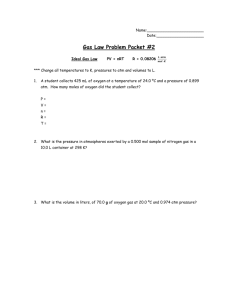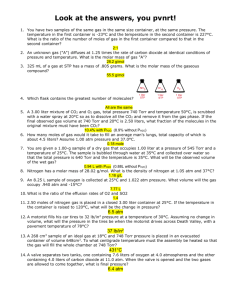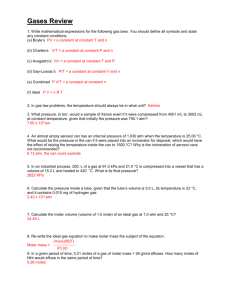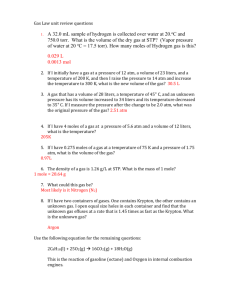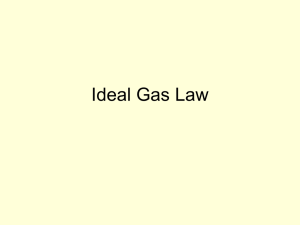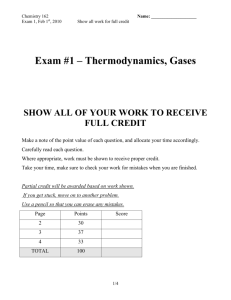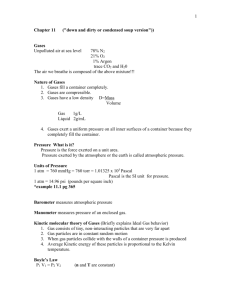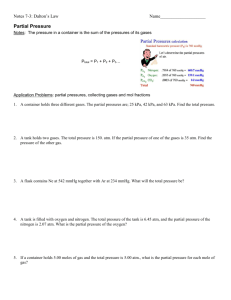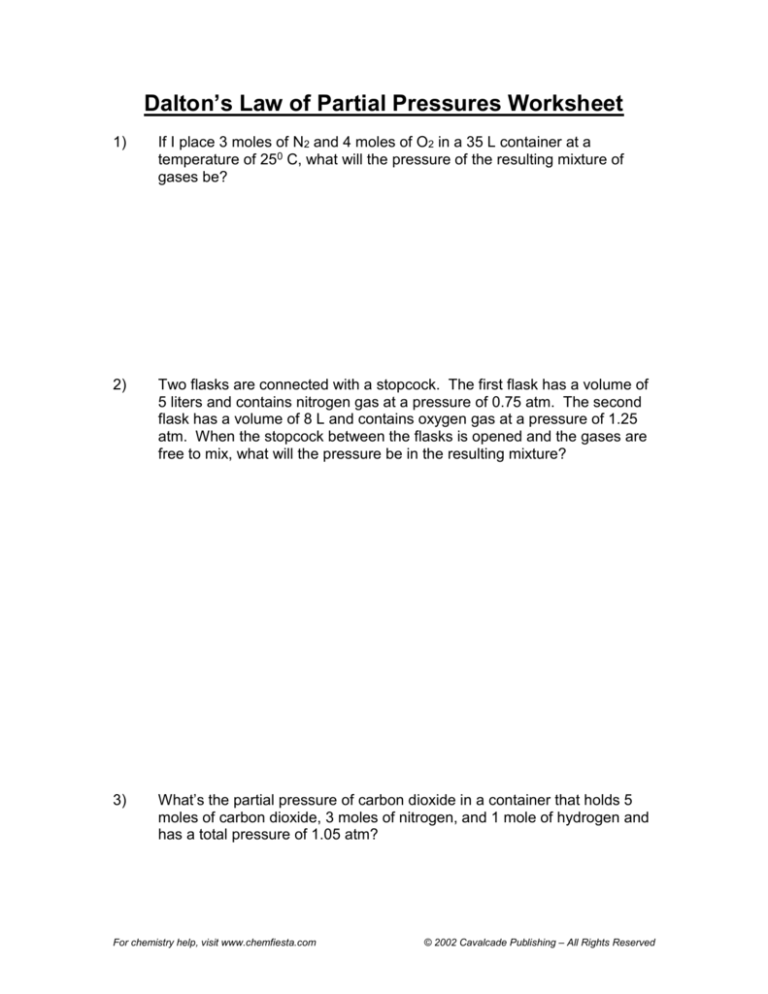
Dalton’s Law of Partial Pressures Worksheet
1)
If I place 3 moles of N2 and 4 moles of O2 in a 35 L container at a
temperature of 250 C, what will the pressure of the resulting mixture of
gases be?
2)
Two flasks are connected with a stopcock. The first flask has a volume of
5 liters and contains nitrogen gas at a pressure of 0.75 atm. The second
flask has a volume of 8 L and contains oxygen gas at a pressure of 1.25
atm. When the stopcock between the flasks is opened and the gases are
free to mix, what will the pressure be in the resulting mixture?
3)
What’s the partial pressure of carbon dioxide in a container that holds 5
moles of carbon dioxide, 3 moles of nitrogen, and 1 mole of hydrogen and
has a total pressure of 1.05 atm?
For chemistry help, visit www.chemfiesta.com
© 2002 Cavalcade Publishing – All Rights Reserved
Dalton’s Law of Partial Pressures Answers
1)
If I place 3 moles of N2 and 4 moles of O2 in a 35 L container at a
temperature of 250 C, what will the pressure of the resulting mixture of
gases be?
Using the ideal gas law, you can determine that the partial pressure
of nitrogen in this mixture will be 2.09 atm (211.8 kPa) and the partial
pressure of oxygen will be 2.79 atm (282.7 kPa). When you add these
together, the total pressure in the container is 4.88 atm (494.5 kPa).
2)
Two flasks are connected with a stopcock. The first flask has a volume of
5 liters and contains nitrogen gas at a pressure of 0.75 atm. The second
flask has a volume of 8 L and contains oxygen gas at a pressure of 1.25
atm. When the stopcock between the flasks is opened and the gases are
free to mix, what will the pressure be in the resulting mixture?
The idea with this problem is basically the same as problem 1:
You’ve got two gases and you need to add their partial pressures
together. The only difference is that in this case, you use Boyle’s
law instead of the ideal gas law. As a result, the total pressure in the
container will be equal to the sums of the partial pressures of both
components.
Using Boyle’s law, the partial pressure of nitrogen is 0.288 atm and
the partial pressure of oxygen is 0.769 atm. When you add them
together, the total pressure in the apparatus is 1.057 atm.
3)
What’s the partial pressure of carbon dioxide in a container that holds 5
moles of carbon dioxide, 3 moles of nitrogen, and 1 mole of hydrogen and
has a total pressure of 1.05 atm?
0.583 atm
For chemistry help, visit www.chemfiesta.com
© 2002 Cavalcade Publishing – All Rights Reserved

